“My Response to Wine Spectator” by Kareem Massoud, Paumanok Vineyards
During our summer recess/hiatus last week, Ben O’Donnell wrote a blog post titled “The Big Grapple: Can Long Island Wines Get Some Respect?“
If you’re at all intersted in Long Island wine — or most any emerging region, really — I’d encourage you to read it. Because it’s part of the Wine Spectator’s blog, you needn’t be a subscriber to access it.
I read it while I was away — and honestly didn’t think much of it. I’m not familiar with Mr. O’Donnell or his previous work, and the topics he covers are generally known (most for many years). In short, there really isn’t anything new here and I’m left wondering what the point is, honestly. Been there, done that.
But, the past, present and future of Long Island wine is something I consider daily. I wasn’t going to mention it here on the site at all, until Kareem Massoud, winemaker at Paumanok Vineyards (who is heavily quoted in the piece by the way) offered this response on Facebook, which he’s agreed to let me publish here as well. I think he makes some very valid, well-thought points.
The past, present and future of Long Island wine is something I consider — and at times lament — every day. So, perhaps I’m “too close” to the topic and can’t read Mr. O’Donnell’s piece with the proper perspective.
So I ask you — what do you think about his piece and about Kareem’s response?
Thank you for taking the time to come and visit us at Paumanok in preparation for your piece. Not all prognosticators on Long Island wine make this basic effort.
One obvious point — paradoxically made and not made — in your article, is that wine writers from influential publications such as yourself and Wine Spectator can contribute, exacerbate and create “image problems” themselves. You didn’t state this point in plain English, but your piece of writing in and of itself serves as such an example. As a writer, you know how much language matters. Please allow me to dissect some examples from your piece and show you what I mean.
Your title is a rhetorical question. Your first paragraph could hardly be more pejorative and clearly sets the tone for the rest of your article. Granted, your blog’s title states that it is opinion and advice that you offer. But I for one — call me naive — expected an objective analysis. You use language such as, “talking about the thorny issue of Long Island wine, which also gets some punch-line treatment in the American wine world. I’d describe the skeptic spectrum as running from “underripe and overpriced” to “a bachelorette party with vines.” How can anyone get anything other than a negative image of Long Island wines when they read commentary like that published in one of America’s leading wine magazines?
There are more subtle slights as well, such as, “The East End endures a lengthy growing season…” If this quote was in reference to a more established wine district of greater renown and popular acceptance it likely would have read, “…enjoys a lengthy growing season…” as it should have read with regard to the East End. The fact that we may sometimes have challenging weather is what vintages are all about. I don’t think winegrowers in Burgundy this year are lamenting the length of their growing season, but one can be sure they are lamenting the weather and global climate change, as do we and growers around the globe. In viticultural terms, a long-growing season is a boon, not something to “endure”.
You say, “…few Long Island wines reach or exceed 90 points in Wine Spectator blind tastings…” The word “few” is a relative term. Long Island is a small, young wine region. Based simply on the small number of producers, it is improbable that there will be as many high-scoring wines from our region as elsewhere. Another writer may well have chosen “several” instead of “few.”
Then, you continue with, “…high costs of land and labor, it is unfair to blame wineries for not turning down the easy sale, but this tars the whole region with the same unflattering brushstroke.” Our prices are set the way most products in our economy are priced, based on supply and demand. Of course, producers will also gauge quality and price accordingly. How this “tars the whole region with the same unflattering brushstroke” is not at all clear. Are some of the wines from Long Island over-priced? I think so. Are some of the wines coming from Napa over-priced? I think so. Are some of the wines coming from Bordeaux over-priced? I think so. You get the idea…
My first quote, “I don’t think it’s a secret…that Long Island has an image problem.” was taken out of context. It was made in the context of my commentary of which you only quoted what suited your premise. Likewise with my second quote, “That bottom tier, all New Yorkers have been exposed to it. There’s a level of vetting”. For anyone who is interested in a more accurate conveyance of our conversation I have pasted an excerpt from another interview (available in full here:http://www.huffingtonpost.com/brad-haskel/the-massoud-family-pauman_b_1120674.html ) below (note the nod to Wine Spectator’s reviews) in which I stated the same thing:
“Long Island is not unlike any other wine district around the world. Every region can be viewed as a pyramid of quality. There are a handful of top producers making outstanding wines. There is a second tier of producers doing terrific work. The rest varies in quality. The difference with Long Island is that our wine district is located within the New York metro market. This is a double edged sword. On one hand it gives us great exposure, access and visibility to one of the world’s most sophisticated wine markets. On the other, the entire spectrum of wines in the quality pyramid are shown to that audience. Wine lovers who seek out Long Island wines will find red, white, and rose wines, sparkling and dessert wines; that offer moderate alcohol, balance, and authenticity. These are delicious wines that should be enjoyed with the local gastronomy as they are in wine regions the world over.
In blind tasting after blind tasting, Long Island wines continue to dispel the myth that they do not offer good value. There has been an image problem with Long Island wines attributable to the quality pyramid and our unique proximity to NYC as I previously described. Over time, this perception is dissolving as consumers are discovering that not only are Long Island wines capable of being excellent values, they may be the best choice for a given meal or celebration regardless of the wine’s origin. This reality is not lost on wine critics either. Two of the industry’s most important publications; Wine Advocate (Robert Parker) and Wine Spectator have both identified wines from Long Island as excellent values.”
Disappointingly, you missed an opportunity to educate your readers on the rising quality of Long Island wines, you missed the whole story. The Long Island wine industry is making better wines and is more successful and viable than it ever has been in it’s entire history. Evidence? You rightly drop the names of top chefs in NYC (Tom Colicchio and Daniel Boulud) who have featured our wines on tap. But I am surprised that you did not make greater mention of the success that Long Island wines currently enjoy in one of the worlds most competitive and sophisticated wine markets. NYC’s top restaurants are pouring Long Island wines in significant volume. What does significant mean? Is it dozens, hundreds or thousands of cases a year? Wouldn’t that be a great story in Wine Spectator? The fact is that at least one thousand cases of Long Island wine have been poured by the glass at top restaurants in NYC within the last 12 months. And one should question why these restaurants do it. Certainly it’s not because of rave reviews of Long Island by Ben O’Donnell in Wine Spectator. And it certainly is not because the wines are unaffordable, as restaurants make their greatest profit margin on their by the glass program. It is because Long Island wines offer world class quality and value. As with any wine district, quality will vary from producer to producer. What else is new?
I expect that when people like yourself visit us they do so with an open mind and an open palate, not an agenda and biased, preconceived notions and old, stale, no-longer-valid criticisms. In most cases I am not disappointed. In this case, in spite of the fact that you did find room for some kind words, I was really disappointed. But, as they say, “If you’ve got haters, you know you’re doing something right.”









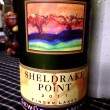

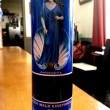

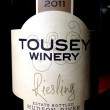
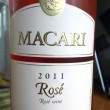
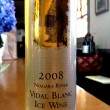


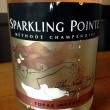
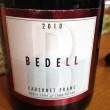
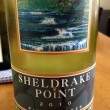


Spot on, Kareem! Your response is instructive, not just for the writer you address, but to anyone reading!
Cheers Natalia!
And thank you Lenn for posting my response on New York Cork Report.
A great response, Kareem. Professional wine writers know the power of their worst - or at least should. Much as music and film critics can make or break their respective genres through their choice of words, and food critics have long recognized the power of their reviews, wine writers have the same responsibility to be careful and not commit exercises in negative feedback just for the sake of negativity.
I had a conversation a few months ago with a prominent wine writer who insisted that Finger Lakes wines are all sweet, except for a few “ok Rieslings.” I mentioned a few of the great wineries up there doing complicated, world-class reds and whites of different varietals. He shrugged. He’d rather drink Spanish and French wines.
That’s his prerogative, of course, and NY wines aren’t his normal beat. But it doesn’t change the fact that someone walking up to him and asking him, as a wine expert, about those wines would take his uninformed opinion as truth. A few words here and there might unintentionally direct potential buyers away from certain places for no other reason than his negativity.
That’s not what I’m saying Ben O’Donnell did. He seems to have asked a lot of questions and tried to research his article before writing it. It’s a shame, then, that his language might lead the reader to some unfortunate conclusions.
Wonderful response, Kareem. I believe writers can always benefit from a critical look at the language they use and how their biases trickle into their writing––it’s important in every aspect of the media, and as you’ve shown, wine writers can easily feed into, or even create, the very misconceptions they claim to lament. Well done.
Right on!
Very good response.
Based on this, I thought the article must be negative. Then I read it. It’s not.
You can’t get a major publication to write something exactly the way you want it written. That would be PR.
The Spectator article would entice me, and many others, to try some of the wines. Take a deep breath.
Mr. Gray: I would think that as a wine writer, you’d need no outside “enticement” to try the wines of any particular region, unless seeking is not part of your M.O.
As long as national writers remain mired in myopic viewpoints that come straight out of the past, it will remain difficult to find New York wine in California, so you may be excused for needing “enticement,” but do try-you’ll be pleasantly surprised.
What Thomas said.
I read Blake’s comment as his way of saying, “The average reader would find Long Island wines enticing based on this blog post.”
So did I.
As a Californian who has visited Finger Lakes and enjoyed its wines, I only wish more could be found in California. That they aren’t well represented here has little if anything to do with the views of national wine writers, myopic or otherwise. Though I haven’t updated myself on the figures, I suspect most Finger Lake wines are sold direct to consumers, with no need or interest to develop markets along the far off West Coast.
Boom. Good read, good points. Well done - thanks.
Maybe that’s what Mr. Gray meant, Evan, but the final “take a breath” is demeaning to Kareem, who incidentally did a fine job of pinpointing O’Donnell’s words, phrases, and overall syntax. It’s called the writer’s voice, and that writer’s voice comes through loud and clear through his word choices.
Gray also states that wineries can’t expect writers to give them “exactly what they want written,” and he is correct. That does not, however, presuppose that a winery owner can’t express disgust with narrow-minded writers.
Quite often, the critics who need to take that breath. They may think that they are, but they are not the arbiters of communication, and in many cases, they are not the arbiters of wine quality either.
This response is graceful and thoughtful, but not reasonable or realistic. Blake has already made the point that you can’t jurisdict what someone else says about you. To that I would add that, in this industry, being fair and balanced can earn you the reputation of being stodgy and being shocking or inflammatory is oft conflated with the road to higher page views. I’m not saying that the original WS article was either shocking or inflammatory, but I am saying that it’s unrealistic to expect fair and balanced writing in the current media-audience dynamic. A glance through some other recent WS blog posts will demonstrate what I mean.
Erika,
Perhaps, but since any person seems to claim the right to have an opinion, whether or not it is an informed one, it seems logical that any other person has a right to call that opinion to account.
Which is, it would seem, exactly what I’m doing.
One virtue of digital media is that everyone can have a say in the discussion. I agree with Blake Gray’s point here — that Ben O’Donnell’s blog does not dismiss Long Island wines, but discusses a widely-shared perception of them. As Lenn writes in his introduction here, “the topics he covers are generally known (most for many years).”
That some vintners find the perception unflattering and unfair is understandable, and our open comments section has allowed them to express their own points of view, at great length. I encourage people interested in Long Island wines to read both the blog and the comments, and draw their own conclusions.
On a side note, Wine Spectator was presenting sponsor of Harvest East End, a wine and food event in Bridghampton on Aug 25 that drew 1,200 people to sample the East End’s bounty. It was a lovely evening, and raised money for hard-working local charitable organizations. A great context to explore the diverse range of Long Island wines.
Thomas Matthews
Executive editor
Wine Spectator
Thank you Mr. Matthews, for reminding us that a writer’s job is to rehash widely shared perceptions rather than to inform us.
Dear Tom,
It is good of you to respond and invite participation. The Wine Spectator, more than any publication, has done a lot to promote Long Island as a wine region starting with the Barrel Tastings of the 80s and 90s and continuing to this day. Yet it is difficult to understand why there seems to always be an uncertainty behind this welcome support.
At best Ben’s choice of words was unfortunate.
Also it is somewhat déjà vu, as it is an old stale story which has little relevance today. I do not know of any winery hoarding any wine out here. We are selling out of our wines faster than we can produce them. Unless writers like Ben think our consumers are clueless about wine, the proof of how good our wines are and how affordable they are is that we are selling them briskly.
There was the same long controversy on another blog in 2004/05 which ended up in a “shootout” documented by Jamie Kutch at this link on Cellartracker:
http://www.cellartracker.com/event.asp?iEvent=280
Following this Jamie went on to become the well know wine producer that he is today.
I invite you and Ben and anyone else to read it.
Furthermore I invite you to a rematch to do the same kind of double blind tasting with such a setting. You have always told us that you taste Long Island wines blind but there is the lingering perception that when you do so you only taste LI wines in that session. If that is the case then perhaps it would be useful to taste them against some of the wines that rate well in the WS.
Ratings of wine, being what they are, have become somewhat puzzling as a wine tasted by different tasters such as yourself or David Schildknecht from Robert Parker’s Wine Advocate, get ratings that are quite far apart, not to mention other tasters.
So to put a public and objective evaluation of Long Island wine I propose a Shootout following the format in the link above and would invite you and David Schilknecht and others as well as some who have posted here and on your blog, and let the chips fall where they may.
I hope you will take us up on this challenge.
Cheers,
Charles
Why do you or any one else care a hoot what these corporate-NYC based wine opinion-ators say or write?! This is the biggest issue with wine marketing now a days is TOO much care of what these wordsmiths say. They know NOTHING about growing, nearly NOTHING about winemaking. They sip a few times and render some totally objective opinion. We in this industry need to be more confident in our products and quit relying on others (esp the corporate types) to market our wines. It’s rather embarrassing when I walk into a wine shop or tasting room and one of the first things out of their mouths in “parker 91″ or WS blah blah blah”. When are we going to market the old fashioned way- That being establishing interpersonal relationships with end users who will get the word out via per-to-peer and word-of-mouth. We HAVE GOT TO GET PAST THIS RIDICULOUSNESS. DIY meets DTC. The only real way to be successful in wine country today.
cheers.
Whenever I have a party, I usually have a blind wine tasting of 6 or 7 wines. To be fare I pick the same grape variety (or blend) of similar age within the same price range . The taster has no idea of what wine I’ve chosen or where the wine is from. So it is both instructive and as you can imagine and a good deal of fun. While the regions vary, I always have a wine from Long Island, California & France. And since many of the people at my parties are not wine experts by any means, the highest rated wines are not the “best wines” as chosen by a panel of experts, but the favorite wines chosen by ordinary wine drinkers. And I must say that Long Island wines always do quite well. What is interesting is that if I had put these same exact wines on my counter top and let people drink what they wanted, the California, Italian and French wines would be the first to go, leaving Long Island in the dust. As a result many people leave my party saying “Wow! I didn’t realize Long Island wines were that good.” So, as the saying goes, “Try it, you’ll like it!”
btw, I’ve been drinking 1987-1988 LI Merlots and Cabernets from my cellar lately and OMG, are they ever lovely! At 25 years old and at the perfect stage to enjoy, they remind me of excellent right and left bank Bordeaux more than anything else.